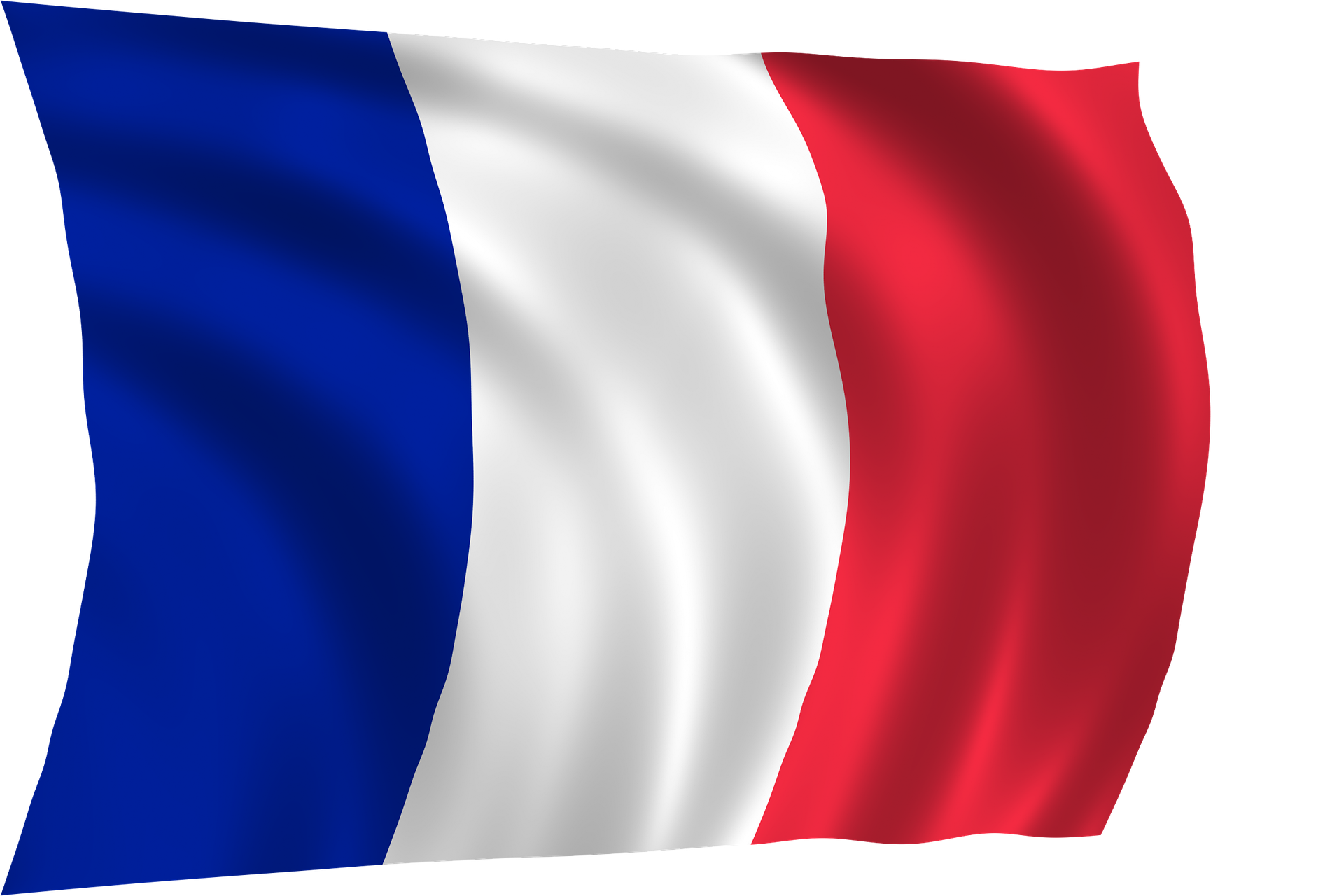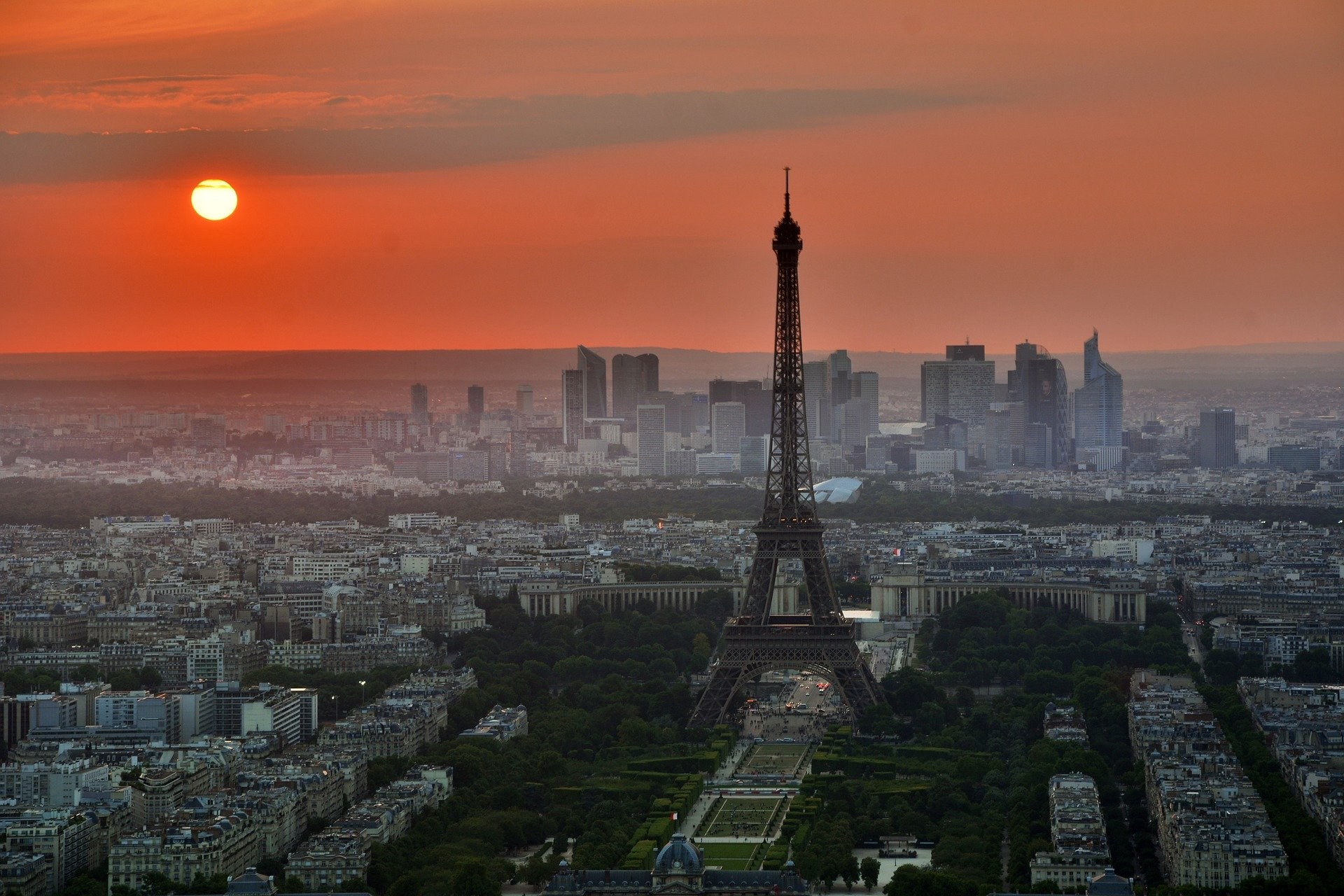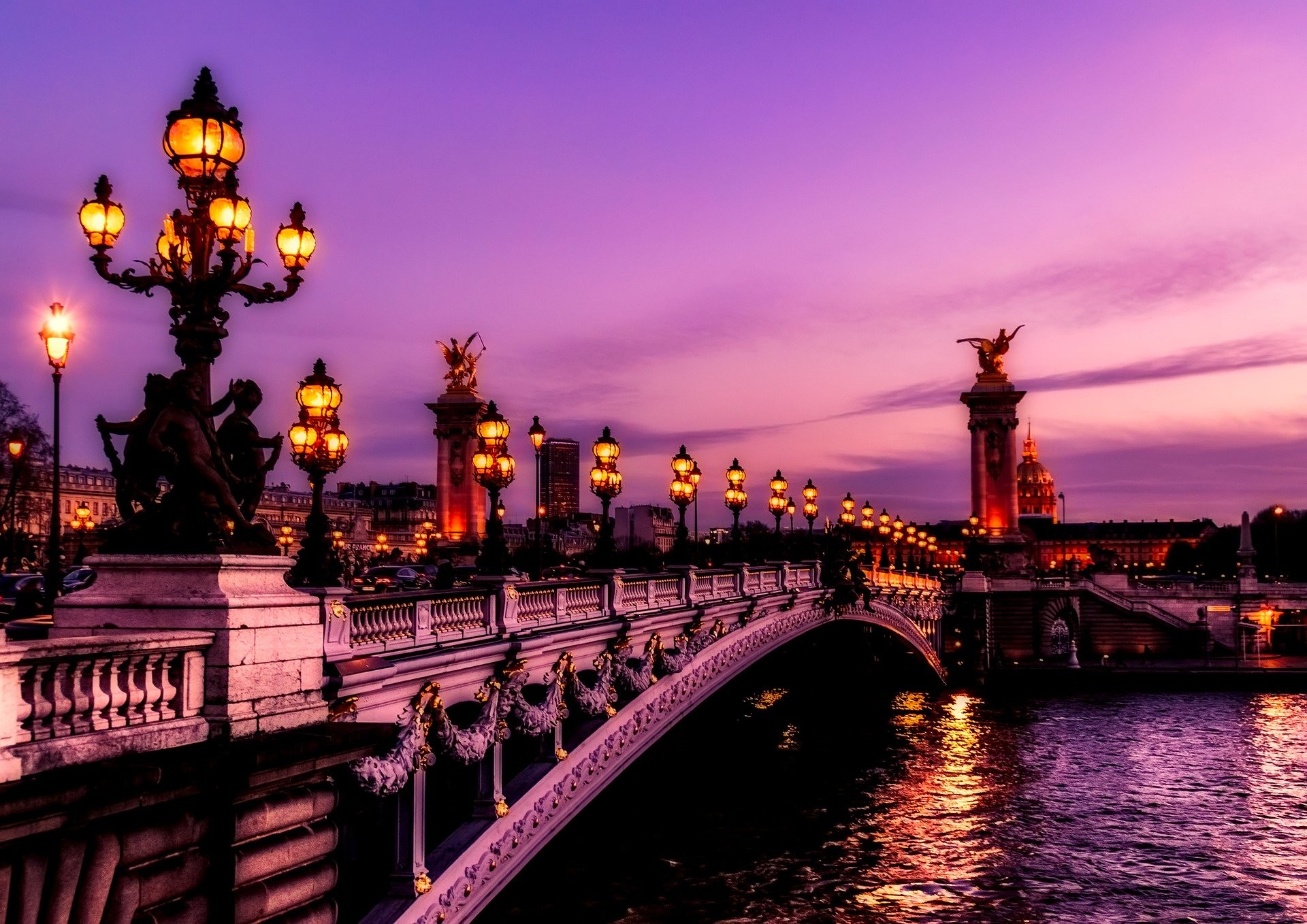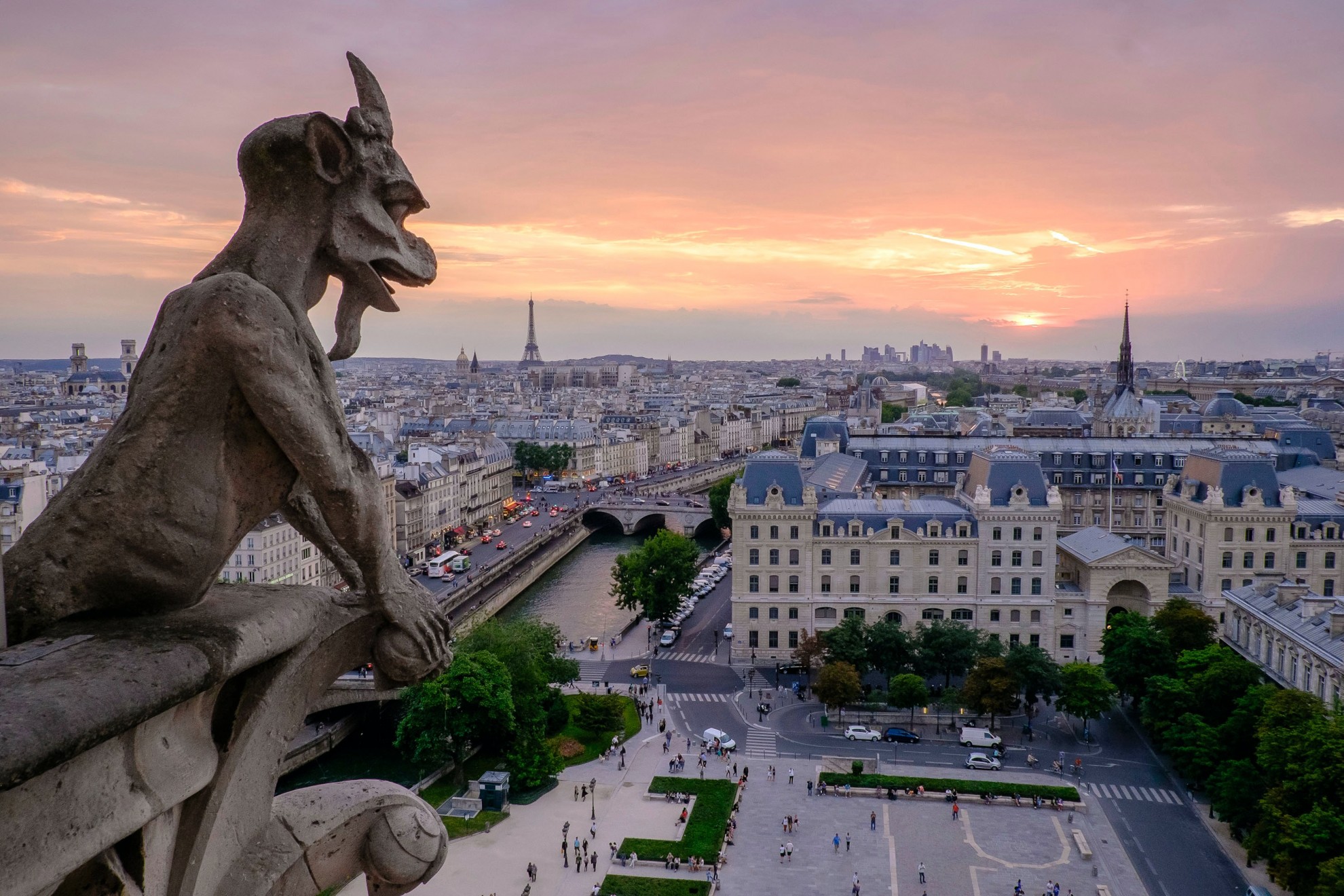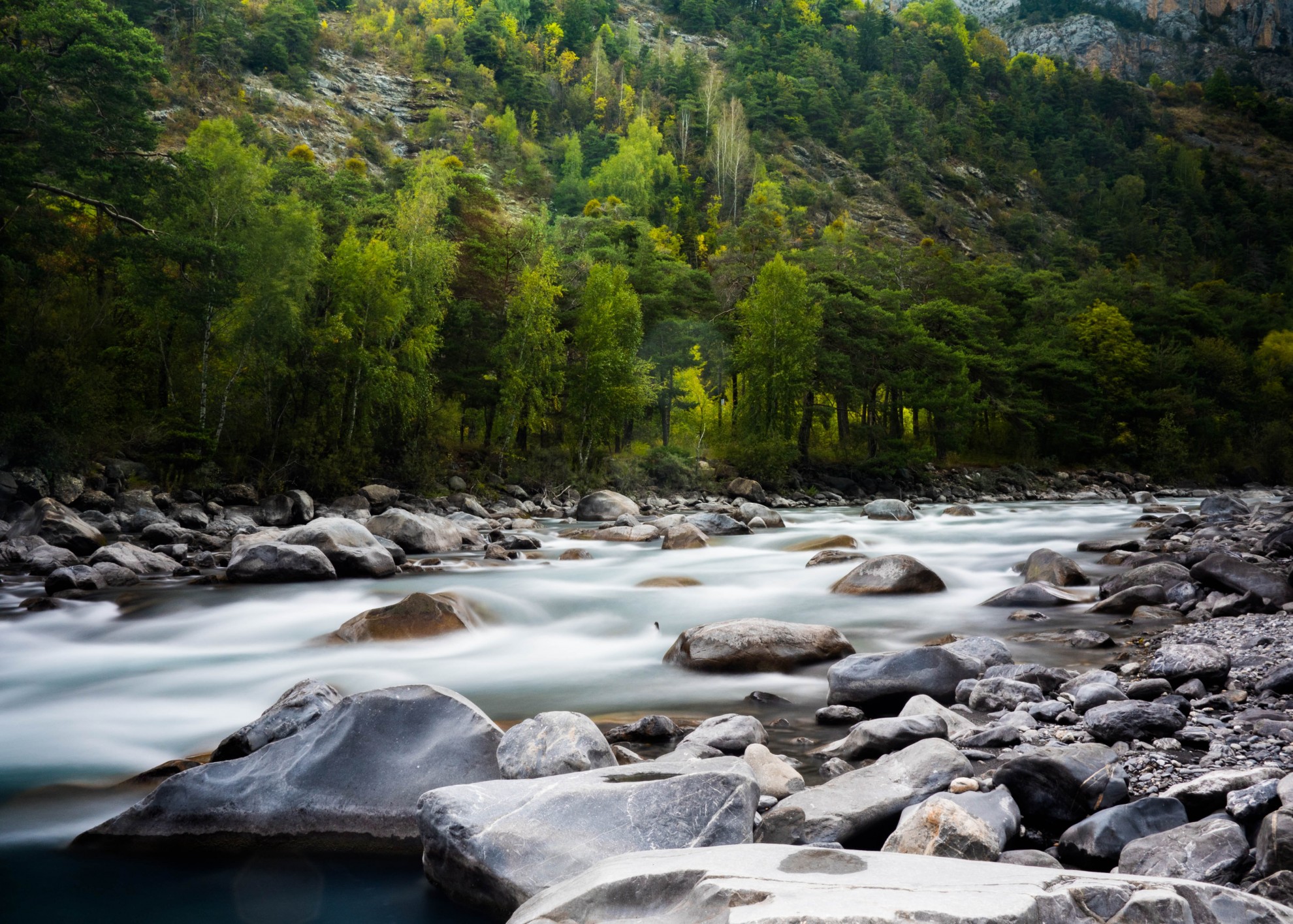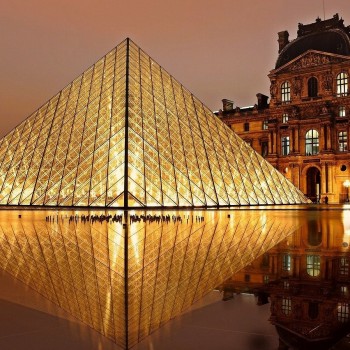France
France
Capital city description
Paris, the capital of France, is one of the most important and influential cities globally, located in the north of Central France. Tourists are drawn to Paris because of its rich history, including monuments and sights, making it the second most visited city in Europe after London in terms of tourism.
The most famous tourist destination is the Notre Dame Cathedral; the renowned museum, the Louvre, came in second. Others include the National Museum of Natural History, the Centre Pompidou, the Basilique du Sacré-Cœur, the Eiffel Tower, and many more. The city houses the national government of France. The president's official residence is in the city at the Élysée Palace, while the Prime Minister is housed at the Hôtel Matignon.
Climate
The climate in France is temperate but divided into four different climatic areas. Central and eastern France's continental climate harbors cold winters and hot summers (the Champagne region, Burgundy, Alsace). The oceanic climate of western France brings average precipitation spread over many days and modest annual temperature variations (Brittany, Normandy, Atlantic Loire, Loire Valley).
The Mediterranean climate of south-eastern France is responsible for hot, dry summers, with rainfall from October to April (when the weather is damp but mild) and ample sunshine all year round (Provence, Côte d'Azur, and Corsica). Above 600-800m altitudes, France's mountain climate brings heavy rainfall and snow three to six months per year.
Languages spoken
French is the official language widely spoken in France; it is the primary form of communication used by the government and the education system. In addition to the large number of regional languages spoken in France are English, German, Italian, Portuguese, Polish, Turkish, Maghrebi Arabic, Berber, and Vietnamese.
Fun/Fascinating Facts
1. France is one of the most famous tourist destinations globally. France welcomes some 89 million visitors annually. The country's capital, Paris, is also the third most visited city globally, behind Bangkok and London.
2. France's national motto is Liberte, Egalite, Franernite ("Liberty, Equality and Fraternity"), its origins in the French Revolution. The famous trio of words was first vocalized in 1790 in a speech given by Maximilien Robespierre. People will see this slogan on coins, postage stamps, government logos, and all those things that symbolize the triumph of the Republic.
3. France is home to the most visited museum globally, the Louvre. Found in the heart of Paris, the magnificent museum is home to around 38,000 works of art and artifacts dating back to prehistoric times. These include the Mona Lisa, the Venus de Milo, and IM Pei's famous glass Louvre Pyramid which sits in the courtyard.
4. In France, marrying a dead person is legally allowed. Only on the condition that you can prove that the deceased intended to marry you while alive. You must also receive permission from the French president.
5. Snails – or escargots – are a favorite French delicacy, traditionally served as an hors-d'oeuvre with garlic butter.
Unique Customs/Traditions
- In France, greeting people with kisses on both cheeks for close friends and long-term colleagues is customary. A handshake can do for business partners and clients.
- France’s famous boulangeries are filled to the brim with fresh loaves, croissants, and pastries. In a country where classic baguette dough is defined by French law, you know the residents take their bread very seriously. In addition, in France, bread is often placed directly on the table rather than on a plate.
- The French enjoy drinking their morning beverage (tea or coffee) out of a small, cereal-sized bowl.
- In France, Kids are fed the same food as adults, and there are a lot of greens and veggies there too. It is written in Article 2 of the Public Health Code 2011, which restricts the amount of ketchup, mayonnaise, vinaigrette, and salt to be served with dishes it was meant to be eaten with. This encourages healthy diets and preserves the traditional French cuisine ‒ which UNESCO declared a ‘World Intangible Heritage’ in 2010.
- Gifting someone a bottle of wine is offensive in French. Your host has carefully chosen the wine for the evening. Bringing your wine may inadvertently imply that you don’t trust the host’s taste in wine or that you would prefer your own.
- In France, April Fools’ Day is best-known for the “Poisson d’avril” (April Fish), one of the French customs in 1564. Not only does this delightful and uniquely French tradition see young children pranking adults by sticking a paper fish onto their back, but they also dash away swiftly and yell, “Poisson d’avril!”
Popular universities
| Name | Description | |
|---|---|---|
| Université PSL (Paris Sciences et Lettres University) | Université PSL (Paris Sciences et Lettres University) is a public research university in Paris, France, established in 2010. With 28 Nobel laureates, 10 Fields medal winners, 3 Abel laureates, 50 César, and 79 Molière awardees, it represents circa 10% of French research and has received more than 150 ERC grants since its creation. Its academic community draws from PSL's 140 laboratories' full potential to offer students and researchers a range of interdisciplinary graduate programs in all scientific fields. It provides an education based on research and interdisciplinary instruction. The students of Université PSL have access to a broad range of science, engineering, humanities, social sciences, fine art, and performing arts. | |
| Sorbonne University | Established in 2018, Sorbonne University is a public research university in Paris, France. Sorbonne University is a world-class research university, presenting a comprehensive disciplinary range of arts, humanities, social sciences, natural sciences, engineering, and medicine. Sorbonne University's approach to education and research is designed for the intellectual and scientific challenges of the 21st century. It is one of the most prestigious universities in Europe and the world; as of 2021, Sorbonne University's alumni and professors have won 33 Nobel Prizes, 6 Fields Medals, and one Turing Award. | |
| Université Paris-Saclay | Université Paris-Saclay is a public research university based in Paris, France. Université Paris-Saclay offers a wide range of courses, from bachelor's degree to doctorate, all of a high international level, within the fields of natural, human and social sciences. Each student can flexibly organize their courses, being a key player in their education in favor of their life goals. Université Paris-Saclay has achieved particular renown in mathematics. As of 2021, 12 Fields Medalists have been affiliated with the university and its associated research institutes, including the Institut des Hautes Études Scientifiques - generally regarded as the birthplace of modern algebraic geometry and catastrophe theory. | |
| École des Ponts ParisTech | École des Ponts ParisTech s a university-level institution of higher education and research in science, engineering, and technology, founded in 1747. it is one of the oldest and most prestigious French Grandes Écoles. École des Ponts ParisTech offers high-level educational programs in various fields, including engineering, management, economics, environment, transportation, and urban planning. | |
| , École normale supérieure de Lyon | Founded in 1880, École normale supérieure de Lyon is an elite French public higher education institution that trains professors, researchers in the academic system through fundamental research, located in the city of Lyon. École normale supérieure de Lyon focuses on educational research. It is home to numerous research laboratories in exact sciences, social sciences, and the humanities. | |
| CentraleSupélec | CentraleSupélec (C.S.) is a French research institute and higher education in engineering and science, established in 2015. Ecole Centrale Paris and Supélec to form one of the most prestigious and selective grandes écoles. It is a key founding member of the University of Paris-Saclay (a consortium of research universities in France), the T.I.M.E. (Top Industrial Managers for Europe) network, and the C.E.S.A.E.R. association of European engineering schools. CentraleSupélec is deemed to be among the best engineering schools in France. | |
| Sciences Po | Founded in 1872, Sciences Po is a private school university in Paris. It is France's leading university in the social sciences. Sciences Po stands out as a world-class university with internationally-recognized degrees and research, a multicultural community, and a worldwide network of partners. | |
| Université de Paris | Université de Paris is a public university in Paris, France. It is among the most prestigious French universities, recognized internationally for its excellence in research, comprehensive, high-quality programs, and support towards innovation. Université de Paris is France’s leading multidisciplinary university. | |
| Université Paris 1 Panthéon-Sorbonne | Université Paris 1 Panthéon-Sorbonne is a public research university located in Paris, France. It offers top-level degree courses in law, political science, economics, management, and the humanities. Paris 1 Panthéon-Sorbonne University is today the most prominent human and social sciences university in France. | |
| Université Grenoble Alpes | Founded in 1339, Université Grenoble Alpes is a public research university in Grenoble, France. Université Grenoble Alpes is traditionally known for its research and education in the natural sciences and engineering and law, institutional economics, linguistics, and psychology. It is also renowned for its academic research in humanities and political sciences, hosting some of the largest research centers in France in fields such as political science, urban planning, or the sociology of organizations. | |
Festivals & Events
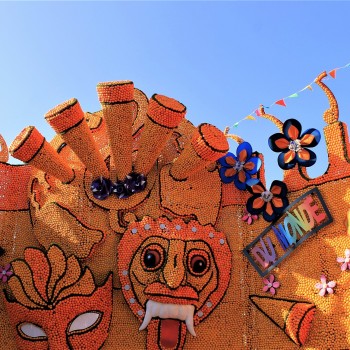
Fête du Citron, or Lemon Festival
Date: February
Fête du Citron, or Lemon Festival, is a carnival event that pays tribute to specialty lemons and other citrus fruits, held over two weeks in February in Menton, France. There are floats and sculptures featured during the festival, and all are made from lemons and oranges.
The festival originated in the 1920s when Menton was the leading producer of lemons in Europe. The event started as a private one, where citrus fruits and flowers were displayed at the Riviera Hotel; the municipality followed this idea and came up with what Fête du Citron is known now.
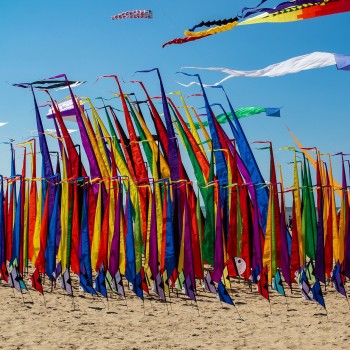
International Kite Festival
Date: April
International Kite Festival held every year in April on the coast of Côte d’Opale, in Berck-sur-Mer, France. This festival draws kite lovers from all over the world, flooding the beach with beautiful kites. The festival displays giant dragons, whales, octopuses, and various cartoon characters taking over the sandy beach to the skies.
In addition, the festival also hosts the International Kite Championships of the World every two years. The festival also hosts various activities, such as a kitemaking workshop. Parents can participate in kitemaking workshops and their kids and learn how to make a kite from scratch.
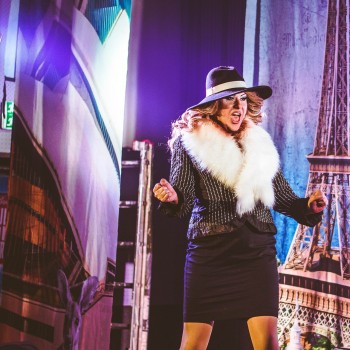
Cannes Film Festival
Date: May
Founded in 1946, Cannes Film Festival is an annual film festival held annually at the Palais des Festivals et des Congrès, Cannes, which previews new films of all genres, including documentaries, worldwide. It includes numerous actors and directors who come to showcase their latest releases.
The festival is as much a social event as a professional one. So while most screenings are invitation-only, there are still plenty of opportunities to spot your favorite A-list celebrities. The Cinéma de la Plage, a vast open-air cinema, also screens Cannes classics on the beach.
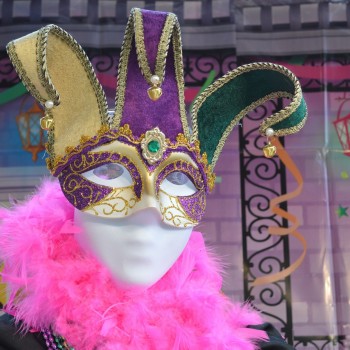
Mardi Gras
Date: March
Mardi Gras is one of the most celebrated festivals in France, reflecting the practice of the last night of eating rich, fatty foods before the ritual Lenten sacrifices and fasting of the Lenten season.
Mardi Gras comes with lavish public celebrations or parades in many French towns and schools. Spectators come to marvel at the dazzling floats, colorful costumes, and stunning parades. Activities are held in various parts of France, along with carnival parties featuring lots of food.

Nice Carnival
Date: February
Nice Carnival, a two-week event held yearly in February, is one of the world’s widely celebrated festivals, attracting over one million visitors each year. There is a distinct theme for the festival every year.
You can expect extravagant floats at the parades with performers dressed up in colorful costumes, numerous beautiful dancers, and great musicians worldwide performing at the superb Carnival.

Festival d’Avignon
Date: July
Festival d’Avignon is the annual theater festival held in July in the Palais des Papes in the Avignon courtyard. Avignon transforms its architectural heritage into various majestic performance venues during this time. Tens of thousands of theater-lovers of all ages come to enjoy theatre, dance, visual arts, and live music and talk about the shows and share their experiences.
The festival has two parts—the “in” and the “off” part. The “in” part The town also becomes an open-air forum where festival-goers can usually feature more mainstream and well-known works, while the “off” part showcases the niches and lesser-known performances.
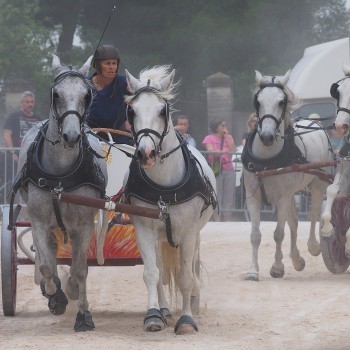
Sedan Medieval Festival
Date: May
Sedan Medieval Festival, celebrated in May, held at the largest medieval castle in Europe, the Château de Sedan, is the festival that brings the spirit of the Middle Ages alive.
Thousands of people flock to the stunning historic castle in France to explore the castle during the festival: exciting jousting tournaments, overflowing banquets, and atmospheric parades around the castle grounds.
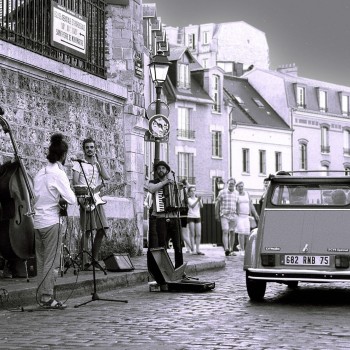
La Fête de la Musique
Date: 21st June
Yearly, on June 21, La Fête de la Musique (Music Day) celebrates the diversity and scope of musical practices in various genres in the most in Paris. This festival aims to promote music from professional and niche artists, encouraging them to perform their compositions on the streets.
Thousands of musicians gather in the streets, bars, and cafés, giving free public performances during the festival. They play everything from rock and jazz to hip-hop and electronic music. A lot of free concerts are also organized for festival attendees to celebrate music diversity worldwide.
Attractions / Top Sights
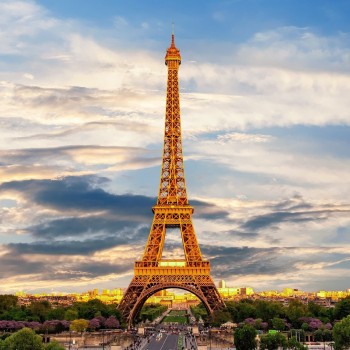
Eiffel Tower
When to visit: June to October
When to visit: https://www.toureiffel.paris/en
The Eiffel Tower is the stunning symbol of Paris and one of France's most fantastic tourist attractions built by Gustave Eiffel as the entrance arch for the International Exhibition of Paris of 1889. At 324 meters (1,063 feet) tall, it is still the highest building in Paris, offering incredible vistas of the city below.
Thousands of visitors from every corner of the world are impressed by the tower's delicate airiness despite its enormous size and the breathtaking panoramas at each of the three levels, making it the most-visited paid tourist attraction globally.
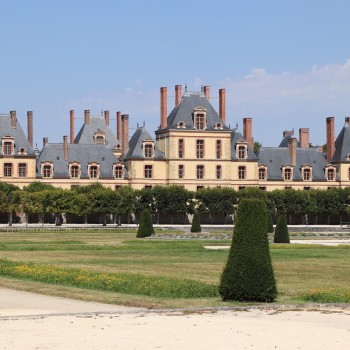
Fontainebleau
When to visit: June to December
When to visit: https://whc.unesco.org/en/list/160
The beautiful little town of Fontainebleau, right south of Paris, is an excellent spot among both natives and visitors. It is one of the most pleasing tourist attractions in France. The forest and the castle are famous as world heritage sites by UNESCO.
The castle was established in the 12th century as a royal hunting home. It is decorated in the typical extremely ornate renaissance style and so much more. The most stunning components are the Trinity Chapel with painted walls and ceilings, elegantly adorned royal apartments, the Pope’s apartment, Napoleon’s apartment, and the Francois I Gallery.
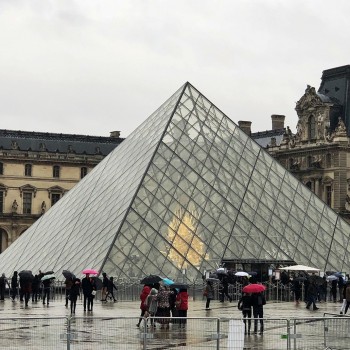
Louvre Museum
When to visit: October to March
When to visit: https://www.louvre.fr/en/
The Louvre Museum is the world's most-visited museum and a historic landmark in Paris, France. It exhibits sculptures, objets d'art, paintings, drawings, and archaeological finds.
Louvre Museum houses some of the best-known works of art, including the Mona Lisa by Leonardo da Vinci, the Wedding Feast at Cana by Veronese, and the 1st-century-BC Venus de Milo sculpture. In addition, the Louvre displays around 35,000 artworks, including countless masterpieces.
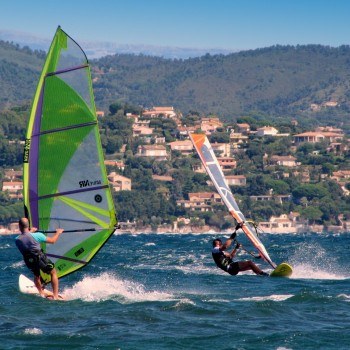
St Tropez
When to visit: April to October
St Tropez is a resort community on the French Riviera. Once a military stronghold, fishing village, and artist colony, it is now a favorite hub for the jet-set, fashion models, and millionaires. The beaches are famous for scantily clad sunbathers, while others come for windsurfing, sailing, motorized water sports, and yachting. Saint-Tropez combines this old-fashioned charm with its status as the preferred destination for the rich and famous. A pretty Provencal village with an immaculate maze of cobbled lanes filled with boutiques and lovely cottages with painted shutters, world-renowned beach clubs, and exclusive nightclubs.
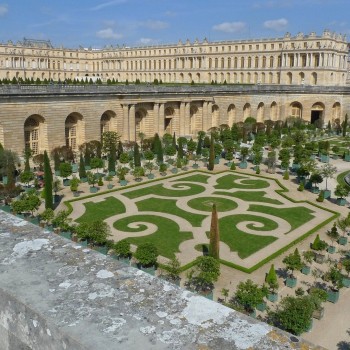
Palace of Versailles
When to visit: November to March
When to visit: https://whc.unesco.org/en/list/83
Constructed in the 17th century, Versailles is the majestic palace of French palaces and chateaus. This UNESCO-listed monument represents a glorious moment in France's history. The most breathtaking space in the palace is the Hall of Mirrors, where courtiers waited for an audience with His Majesty. This dazzling gallery sparkles with sunlight that enters through the windows and is reflected off hundreds of ornamental mirrors.
At the same time, dozens of glittering chandeliers and gilded details make the overall impression even more marvelous. In addition, the pink marble charm of Trianon, Marie-Antoinette's estate, fantastic fountains, miles of regular gardens, and much more added to the magic of this marvelous castle.
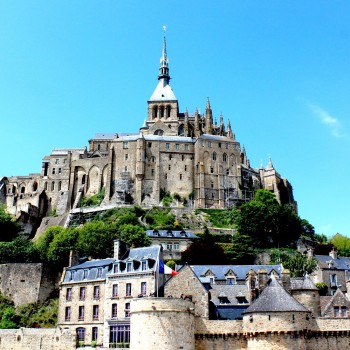
Mont Saint-Michel
When to visit: In spring and summer
When to visit: https://whc.unesco.org/en/list/80
One of the most stunning tourists spots in Europe, Mont Saint-Michel, A breathtaking and well-preserved Norman Benedictine Abbey of St Michel, stands at the peak of the rocky island of the same name, Mont Saint Michel, a small tidal island located just off the coast of Normandy and surrounded by the medieval town's winding streets and intricate architecture.
The monastery was established in the 8th century by Aubert, bishop of the neighboring Avranches. Mont Saint-Michel and its surrounding bay were inscribed on the UNESCO list of World Heritage Sites in 1979 for their unique aesthetic and importance as a medieval Christian site.
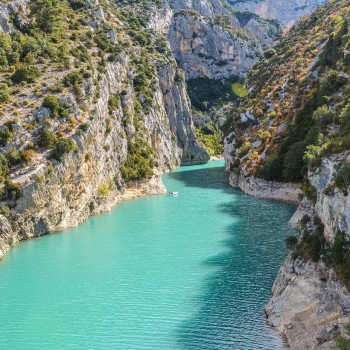
Gorge du Verdon
When to visit: In summer
Located in southeastern France, one of Europe’s most beautiful river canyons is the lovely Gorge du Verdon. It’s at its deepest (almost 2,300 feet or 700 meters deep) between Castellane and Moustiers-Sainte-Marie, an area that offers picturesque views as the green emerald Verdon River winds its way through the canyon.
The gorge is exceptionally prevalent with tourists, who can drive around its rim, rent kayaks to travel on the river, or hike. It is considered an outstanding destination for multi-pitch climbing, with 1,500 routes available ranging from 20 meters (65 feet) to over 400 meters (1,300 feet). The limestone walls, which are several hundreds of meters high, attract many rock climbers.
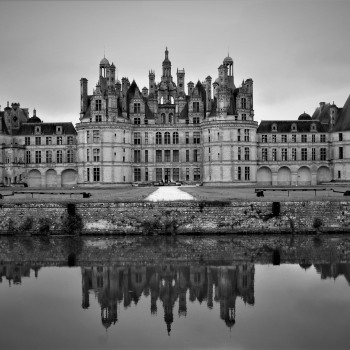
Château de Chambord
When to visit: In spring and summer
Situated in the village of Chambord in the Loire Valley, the royal Château de Chambord is a fantastic and colossal château and a perfect masterpiece of the French Renaissance, a fine mixture of conventional medieval French style with classical architectures of the Renaissance. The chateau was established by King Francois I and finished in 1547 under Henry II.
The enormous chateau has eleven types of towers and three types of chimneys. Its outline resembles that of a town more than of a tower. It also has no proportion and is mounted at the corners by the enormous edifices.
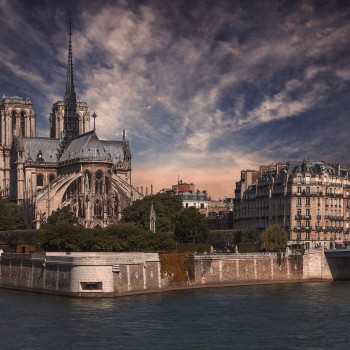
Cathédrale Notre-Dame de Chartres
When to visit: In spring and summer
The Chartres Cathedral is renowned for its marvelous stained-glass windows dating to the 12th and 13th centuries. The brilliant stained-glass windows allow colorful light to filter into the vast nave, creating an ethereal effect. The intricately detailed windows reveal the incredible craftsmanship in depicting biblical stories. Nevertheless, this famous UNESCO-listed cathedral displays the glory of medieval Gothic architecture.
The Passion window is one of the most original in its style and expression, and the Blue Virgin window from the 12th century. The rose windows are especially noteworthy for their stunning size and details.
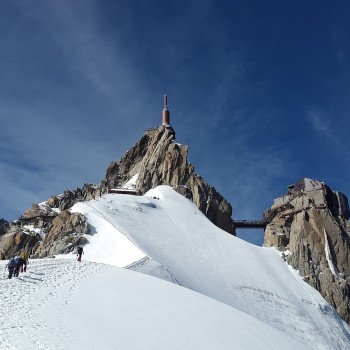
Chamonix Valley
When to visit: May to September
Chamonix Valley is one of the most aged ski resorts in France. It is located near Mont Blanc in the French Alps. The first Winter Olympics was held here in 1924. The incredible spectacle of Mont Blanc in the French Alps is an unforgettable sight.
In winter, world-class skiers and boarders push themselves to extremes on Europe's most challenging slopes, while in the summer months, Chamonix is a mecca for alpine mountaineers and mountain bikers. Riding a cable car through the mountains is famous in the summer. The delightful village is one of the most lovely places to visit in France for inspiring natural scenery and alpine accommodations.















